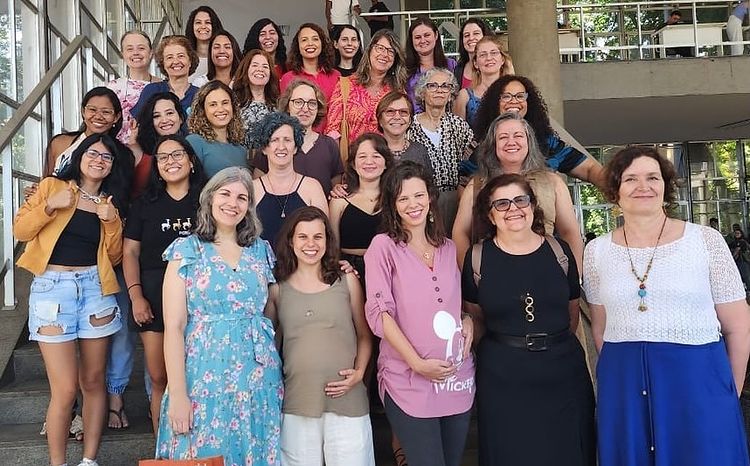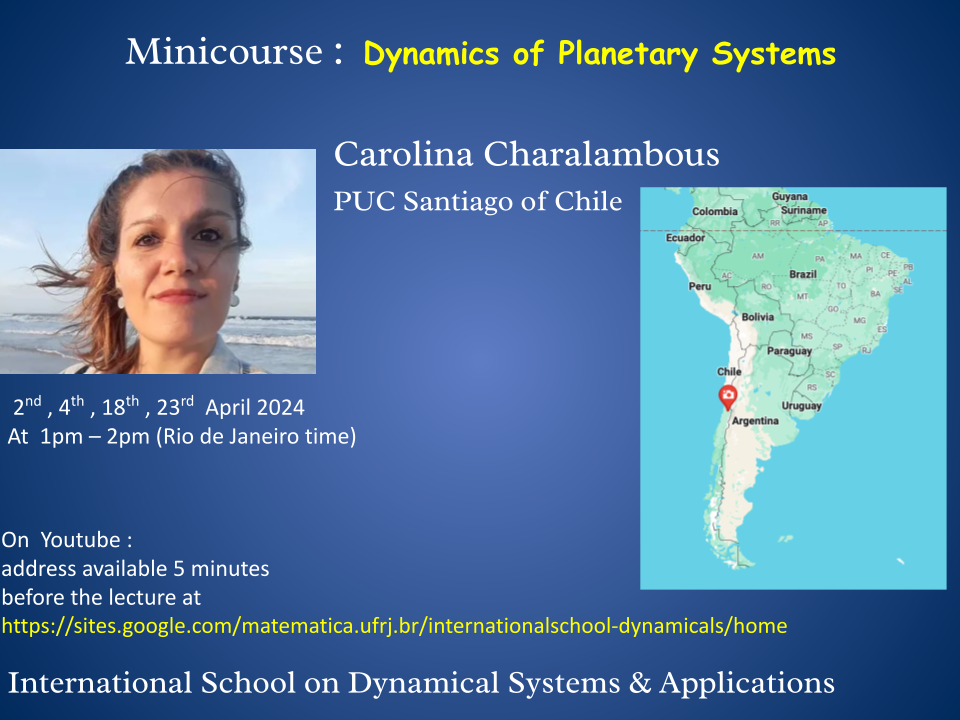
FLUXOS SINGULARES
26 de abril, às 03:15 p.m. (Rio de Janeiro local time)
Local: Sala C116 - Bloco C - CT – Instituto de Matemática – UFRJ.
Transmissão Online: https://youtube.com/live/
Palestrante: Alexander Arbieto
Resumo:
Apresentaremos a teoria de fluxos com singularidade e formas fracas de hiperbolicidade. Em particular, veremos alguns exemplos importantes como o atrator de Lorenz, a ferradura singular contratora e etc. Mostraremos resultados recentes da teoria.

Evento: Mulheres na Matemática IM - UFRJ
O Encontro de Mulheres Matemáticas do Instituto de Matemática da Universidade Federal do Rio de Janeiro visa estimular a inclusão e permanência das mulheres na carreira acadêmica e científica em matemática. O propósito principal deste evento é reunir matemáticas ativas em várias áreas da Matemática, proporcionando-lhes a oportunidade de compartilhar suas pesquisas e experiências pessoais.
Além disso, o intento consiste em suscitar o interesse pelas questões de gênero, visando sensibilizar toda a comunidade acadêmica e científica acerca da relevância da equidade de gênero. Tal iniciativa possibilita a condução de debates abrangentes acerca de diversos temas correlatos a essa problemática.

Minicourse: Dynamic of Planetary Systems
Professor: Carolina Charalambous (PUC Santiago of Chile)
2nd, 4th, 18th, 23rd April 2024
At 1:00 p.m. to 2:00 p.m. (Rio de Janeiro local time)
The link to register for this semester's mini-courses:
https://docs.google.com/forms/
Online Transmission:
https://us02web.zoom.us/j/
Meeting ID: 845 3575 8212 - Passcode: 296165
Abstract: In this minicourse we will delve into the intersection of dynamics and astrophysics, elcudating the instrumental role dynamics plays in resolving diverse astrophysical problems. Beginning with a general overview of the Solar System and understanding how planet form, we will cover general problems observed in extrasolar systems as consequence of their dynamic evolution. We will focus on resonant systems and how these specific configurations might help us understand the origins of planetary systems. The course will be divided into the "chronological" phases of planet formation: early stages when there was still gas in the propoplanetary disk, and for the long term evolution we will analyse the dissipative effects that the star produces on the planets as well as the interactions between the planets themselves. The goal is to have some basic techniques of solar system dynamics together with their application to actual problems, and have some analytical and numerical tools.

Ferramentas de análise dos devedores municipais inscritos na Dívida Ativa da PGM
19 de abril, às 03:15 p.m. (Rio de Janeiro local time)
Local: Sala C116 - Bloco C - CT – Instituto de Matemática – UFRJ.
Transmissão Online: https://youtube.com/live/
Palestrante: Heudson Mirandola (UFRJ)
Resumo:
Inicialmente, falarei um pouco do laboratório recém-criado LAMDEC - Laboratório de Métodos para Suporte à Tomada de Decisão. Seus objetivos e metas. E, como resultado de uma parceria com a PGM (Procuradoria Geral do Município do Rio de Janeiro), apresentaremos algumas ferramentas de análises e visualização de dados desenvolvidas sobre os devedores inscritos na Dívida Ativa da PGM, os principais desafios e soluções de implementação no sistema da PGM.
 Participe do JICIM - Jornada de iniciação cientifica no Instituto de Matemática da UFRJ
Participe do JICIM - Jornada de iniciação cientifica no Instituto de Matemática da UFRJ
Data: 08 á 11 de Abril, às 12:00h
Confira as informações AQUI.
